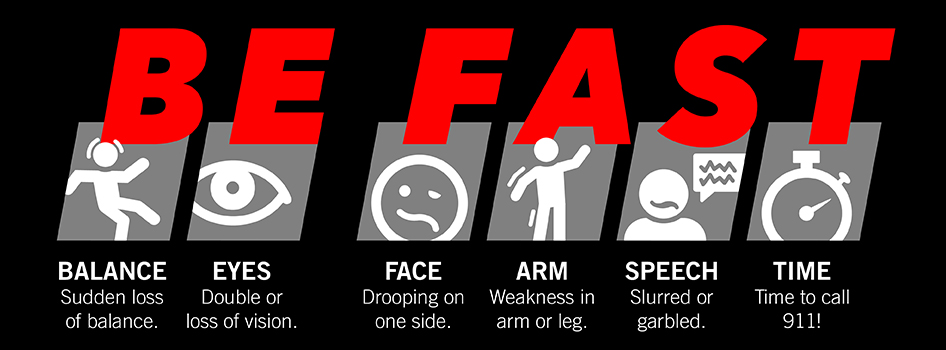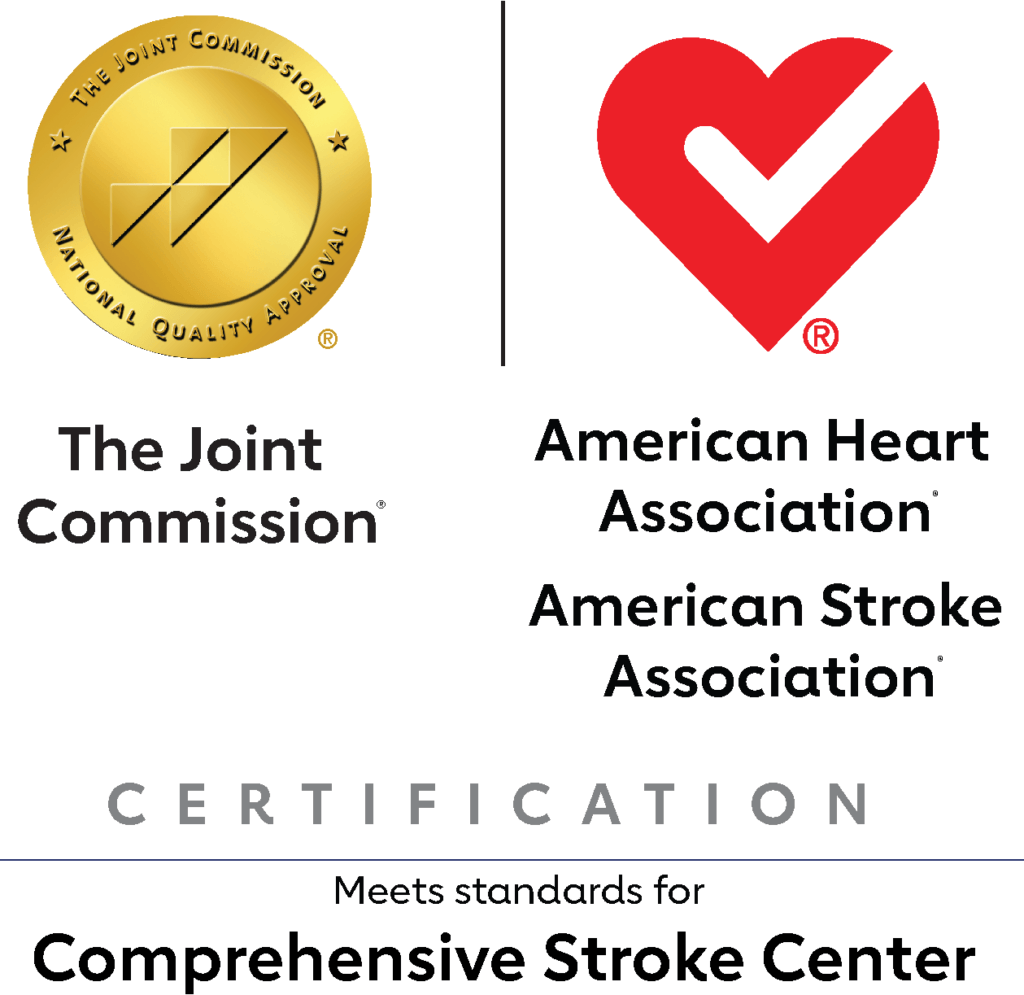
Subarachnoid Hemorrhage
Subarachnoid Hemorrhage Overview
Subarachnoid hemorrhage (SAH) is a type of stroke characterized by bleeding between the brain and the thin tissues that cover the brain, known as the subarachnoid space. This space consists of cerebrospinal fluid (CSF) and major blood vessels.

Subarachnoid Hemorrhage Symptoms
The main symptom of subarachnoid hemorrhage is a sudden and severe headache, also known as a “thunderclap” headache. It is often described as the worst headache of one’s life.
Other symptoms may include:
- Confusion
- Decreased consciousness
- Eye and vision problems, such as double vision, vision loss, eyelid drooping, unequal pupil size, and light sensitivity
- Mood and personality changes, such as irritability
- Muscle aches, especially in the neck and shoulders
- Nausea and vomiting
- Numbness in part of the body
- Seizure
- Stiff neck
If you are experiencing symptoms of subarachnoid hemorrhage, call 911 immediately.
Recognizing a stroke quickly and calling 9-1-1 leads to faster diagnosis and treatment and better recovery. People should “BE FAST” when it comes to stroke.
Here’s how to BE FAST:
- B – BALANCE: Ask the person to walk. Do they have trouble keeping their balance or walking normally?
- E – EYES: Ask the person about their eyesight. Have they lost vision or experienced vision changes in one or both eyes?
- F – FACE: Ask the person to smile. Does one side of the face droop?
- A – ARMS: Ask the person to raise both arms. Does one arm drift downward?
- S – SPEECH: Ask the person to repeat a simple phrase. Is their speech slurred or strange?
- T – TIME: If you observe any of these signs, call 9-1-1 immediately.

Subarachnoid Hemorrhage Treatment
Without emergency medical treatment, subarachnoid hemorrhage can result in permanent brain damage or death. Depending on the cause of the bleed, treatment may involve:
- Surgery to prevent bleeding of an aneurysm. Open surgery via a craniotomy may be performed to clip an aneurysm or to remove an arteriovenous malformation. Alternatively, endovascular surgery may be an option. This minimally invasive approach involves navigating a catheter through the network of blood vessels to the site of the abnormality and sealing it off from blood flow using coils, stents, or other devices.
- The surgical placement of a shunt to drain excess cerebrospinal fluid (CSF) and relieve pressure within the skull (hydrocephalus).
- Medication to control blood pressure, prevent arterial spasm (vasospasm), relieve headaches, and/or manage seizures
- Neuro-rehabilitation to improve function, independence, and quality of life. This may include physical, occupational, and/or speech therapy.
Additional Information on Subarachnoid Hemorrhage
How common is subarachnoid hemorrhage?
The estimated incidence rates for subarachnoid hemorrhage are between 10 and 25 cases per 100,000 people per year.
Who gets subarachnoid hemorrhage?
Because subarachnoid hemorrhage can be caused by a traumatic injury, it can happen to anyone. Causes of traumatic brain injuries include:
- Falls
- Military combat
- Motor vehicle or bicycle crashes
- Physical abuse
- Sports
Spontaneous SAH is often caused by the rupture of an aneurysm, a balloon-like bulge in the wall of a blood vessel. It is estimated that 1 in 50 people are living with an unruptured aneurysm. Brain aneurysms are more common in adults than in children and are slightly more common in women than in men.
A less common type of blood vessel abnormality, known as an arteriovenous malformation, may also rupture and cause subarachnoid hemorrhage.
The following have also been associated with increased risk of subarachnoid hemorrhage:
- Ehlers-Danlos syndrome
- Excessive alcohol consumption
- Family history of aneurysms
- Fibromuscular dysplasia (FMD)
- High blood pressure
- Polycystic kidney disease
- Smoking
- Use of blood thinners
- Use of illicit drugs, such as cocaine and methamphetamine
How is subarachnoid hemorrhage diagnosed?
The following tests may be used to diagnose subarachnoid hemorrhage and its underlying cause:
- Cerebral angiography
- Computed tomography (CT) scan
- Eye exam
- Lumbar puncture
- Magnetic resonance imaging
- Neurological exam
- Physical exam
- Cerebrovascular Testing
Other tests may be needed to evaluate possible complications of SAH, such as:
- Electroencephalogram (EEG) to monitor seizures
- Transcranial Doppler (TCD) to monitor vasospasm
What are the long-term effects of subarachnoid hemorrhage?
Recovery from subarachnoid hemorrhage depends on various factors, such as the underlying cause and extent of the bleed.
Early complications can include:
- Hydrocephalus, an increase in pressure within the skull caused by a buildup of cerebrospinal fluid in the subarachnoid space
- Rebleeding
- Vasospasm, a common complication in which the arteries in the brain narrow and restrict blood flow
Some people make a full recovery from subarachnoid hemorrhage, while others have lasting effects. These can include:
- Cognitive dysfunction, such as challenges with memory, planning, and concentration
- Epilepsy
- Fatigue
- Headaches
- Emotional changes, such as depression and anxiety
- Mood disorders
- Paralysis
- Speech and language deficits
- Vision problems






